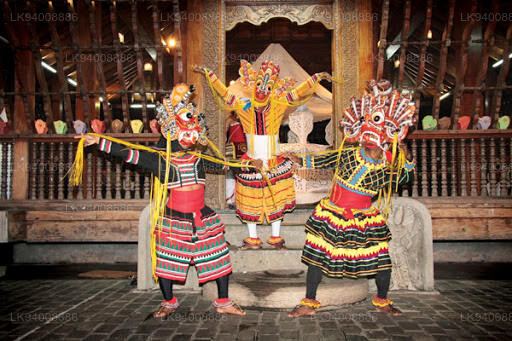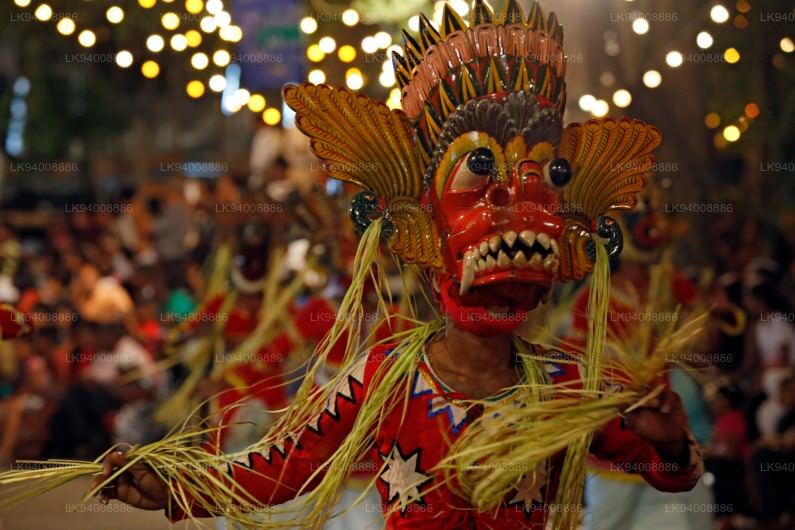Low-Country Dance/Pahatharata Natum

Dances in low country are highly ritualistic. This form of dance is performed to appease evil spirits which cause sickness and is thus called ‘Devil Dance’.The dancers wear masks depicting many characters varied in forms of bird, demons, reptiles, etc. Deity Dances are used to get the help of variety of Gods and Goddesses , to appease evil spirits . There are some dances related to the Pahatharata ( low country) style known as Daha Ata Sanniya held to exorcise 18 types of diseases from the human body. Furthermore there are some Kolam (jovial) characters and Devil characters also can be seen. A cylindrical body drum used for low country dancing is called as “Yak Bera”, and it is beaten with both hands.
The Low Country dance form is known as such because the important schools of this dance form were historically located in the low-lying coastal areas of the Western and Southern Provinces. This form of dance was also known as Ruhunu Dance, as the areas of the present Western and Southern Provinces made up a greater part of the ancient Ruhunu Kingdom of Sri Lanka. Dances of Sri Lanka states that Low Country dances are very different from Kandyan dance—the only similarity being the basic mandiya pose of knees half bent and spread outward, and arms bent at the elbows in line with the chest. These dances are very ritualistic, and the use of masks is prevalent through all of them.





Comments
Post a Comment